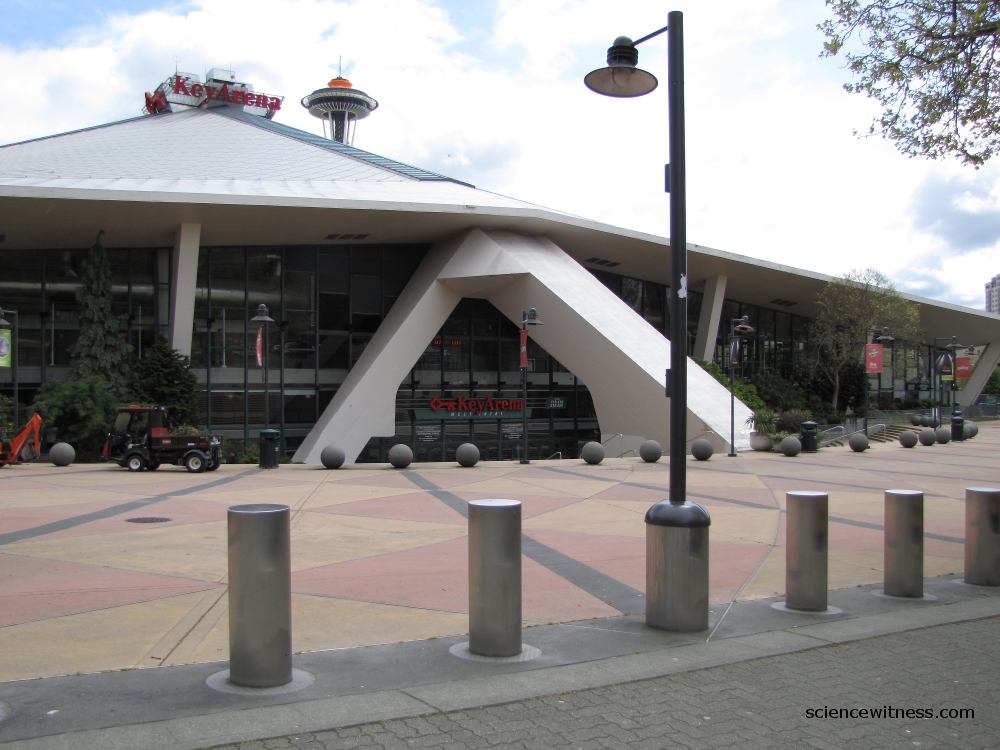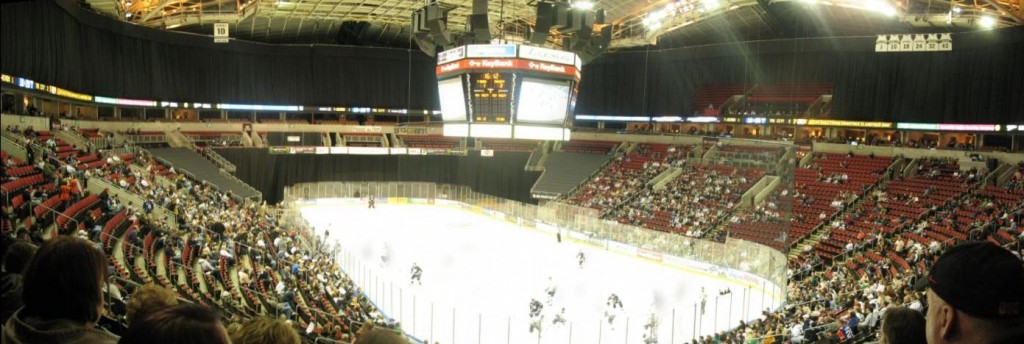
Last week, the City of Seattle and King County announced that Seattle native Christopher Hansen has submitted a proposal to build a new arena to host future NBA and NHL teams. Hansen will raise $290 million privately to pair with $200 million in public funds. Any additional cost overruns will be the responsibility of private investors. Public funding will be accounted for through revenue generated by the new arena, thus avoiding any new tax burden on the public. Importantly, the proposal bypasses the need for any funding at the state level and is essentially paid for by user fees in Seattle only.
The new arena is planned to be built in a region of Seattle near both CenturyLink Field (Seahawks & Sounders) and Safeco Field (Mariners). One of the main concerns about this location revolves around traffic. The arena would be near arteries that supply the Port of Seattle, so some thought must be made about methods to prevent any slowing of commerce. Parking is also an issue with garages at Safeco and CenturyLink fields providing 2000 stalls each. By comparison, the Rogers Arena in Vancouver provides 7000 stalls within a 15 minute walk. Planning will need to minimize the overlap in events among the five teams that play in the area (see schedule below). Avoiding NFL and MLS games should not be difficult due to the low number of home dates for these teams. The Mariners, however, will require a number of home dates that may overlap with the NBA and/or NHL. Since all three typically have night games during the week, there will surely be times when events are happening at both venues. As it stands, Seattle’s Department of Planning and Development requires teams at CenturyLink and Safeco to plan a minimum of 4 hours between the end of one event and the start of another. With the addition of two more teams, it would seem difficult to maintain compliance.

Traffic and parking aside, an important question is where exactly would a new NBA/NHL team play until a new arena is built? The most obvious choice is Key Arena (see photo). Built in 1962 for the World’s Fair, Key Arena underwent major renovations in 1994. As a basketball facility, a new NBA team should be able to play there temporarily, but NHL hockey might be a different issue. When configured for hockey, Key Arena provides only 9,000 unobstructed seats (and 58 luxury suites). I have played hockey at Key Arena and can confirm that the dressing rooms will require some renovating before they are close to suitable by NHL standards. Although two junior teams, the Seattle Thunderbirds and Everett Silvertips play in buildings designed for hockey, both are on the smaller side for NHL crowds (6,500 and 8,300 respectively). The Tacoma dome can accommodate large crowds for hockey, but it is unlikely that the city of Seattle will allow a team to locate outside city limits (Everett is 30 minutes north of Seattle, Tacoma 45 minutes south). No, the Key Arena is almost certainly the venue to be chosen as the city has no major tenant for it now or in the foreseeable future (unless you count the Seattle Storm). Some voices, including Mariners transportation director Susan Ranf even suggest that the Key Arena should be redeveloped as a permanent site for any incoming NBA/NHL teams.

So, can a venue like Key Arena host a NHL team for 1 or 2 years while a modern arena is being constructed? In Quebec City, there are estimates of annual losses in the range of $20 million for a team that stays in the 15,000 seat Colisee with its lack of luxury boxes. However, many teams have made small venues work on a temporary basis. Before the Shark Tank was built, the San Jose Sharks played in the Cow Palace (1991-1993), an arena that seated just over 11,000. Likewise, the Tampa Bay Lightning played their first year (1992) in the 11,000-seat Expo Hall before moving to the much larger Thunderdome. The Carolina Hurricanes played two years (1997-1999) at Greensboro Coliseum (23,000 seats), where they averaged just 8,637 fans. So, there does seem to be a precedent for arenas of this size, but the question depends largely on the magnitude of financial loss that the new owners are willing to absorb while a new venue is built.
And finally, there is the question of whether Seattle has enough fans to support an NHL team. There exists surprisingly little hockey culture in Seattle, especially when one considers how close to the Canadian border we are. The two main recreational leagues (Greater Seattle Hockey League and Cascade Hockey League) together include about 120 teams, though the vast majority are beginners. The Seattle Jr. Totems (“Totems” is my early pick for NHL team name) are the travel team for minor hockey players and the University of Washington has a club team. There are few arenas in Seattle and even those are found almost exclusively on the outskirts of town. Within Seattle itself, there are no hockey arenas to be found (see map).
The two junior teams draw small, but respectable crowds (see table below). Canadian WHL teams draw slightly larger crowds in cities with established NHL teams. The $200 million dollar question is whether Seattle can be a hockey town. The Seattle Sounders Football Club exceeded all expectations when they began play, though it can be argued that there was more soccer tradition in the city given the mild weather year round. The Vancouver Canucks would be a natural rival to be sure, and I have noticed that many Vancouver fans come down for Giants games in Everett and Seattle, so presumably this spillover would help an NHL team as well.
Team 2011-2012 Average Attendance
- Seattle Thunderbirds 4862
- Everett Silvertips 4922
- Calgary Hitmen 6266
- Vancouver Giants 6000
- Edmonton Oil Kings 5007
So, a new movement is afoot to build an arena and entice NBA/NHL teams to come to Seattle. Much work on the arena, NBA and NHL fronts awaits, but the sad Seattle sports scene finally has some positive news. Can a NHL team make Key Arena work? Can they fill Key Arena when they get here? Will Seattle support a professional hockey team long term? These are all important issues to consider for a new NHL team in Seattle, but just because there’s a goalie doesn’t mean we can’t score.
Update: Developer Chris Hansen spoke in front of Seattle City Council Wednesday morning and stated, ”Renovating KeyArena again is not an option, as the venue is not big enough for NHL hockey games.”
